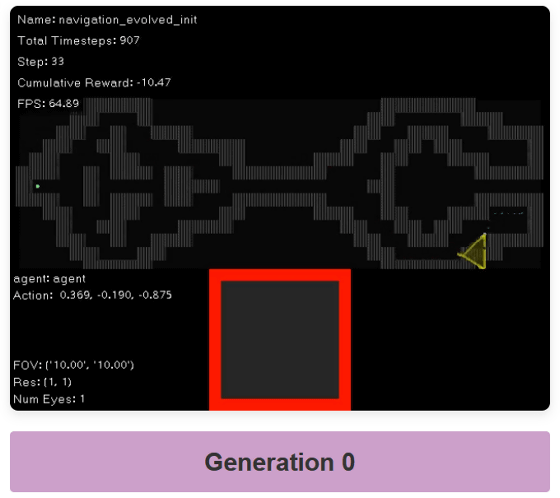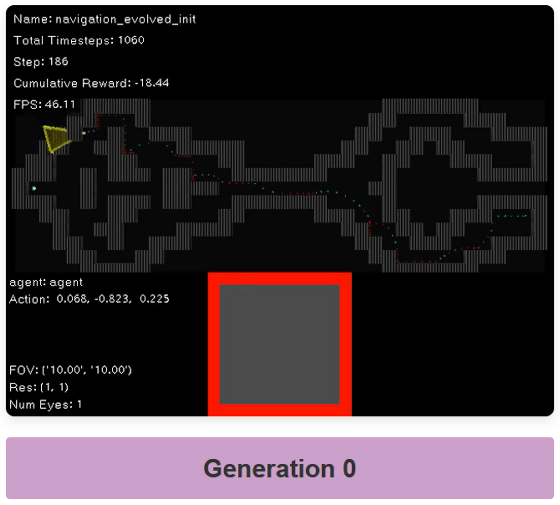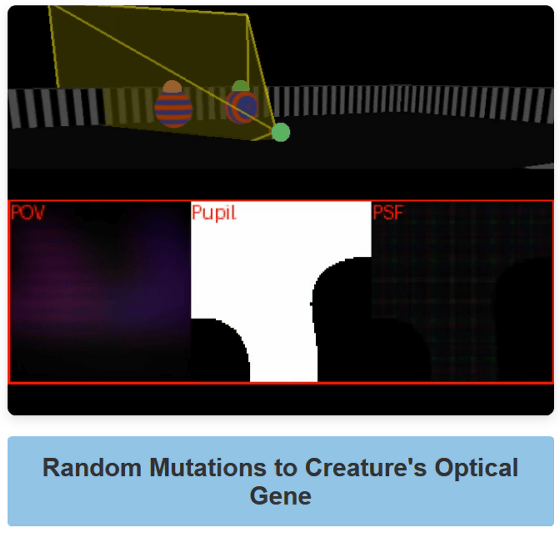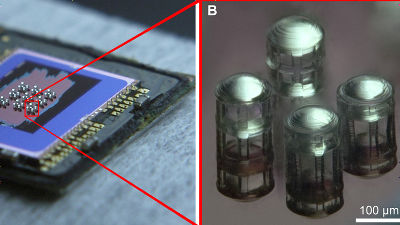MIT is conducting research to observe how digital creatures living in virtual space evolve 'eyes' from scratch

Vision is an important sense for many animals, including humans, and there are many different types of 'eyes' depending on their habitat and ecology. In order to investigate the evolution of eyes in such organisms, Massachusetts Institute of Technology (MIT) is conducting research to observe the evolution of eyes using digital organisms living in a virtual space.
[2501.15001] What if Eye...? Computationally Recreating Vision Evolution

What if Eye...?
https://eyes.mit.edu/
In a paper posted to the preprint server arXiv, the MIT research team said, 'Natural visual systems show a remarkable diversity, from simple light-sensitive patches to complex camera-type eyes with lenses. Natural selection has produced these eyes through countless mutations over millions of years, but they represent only one set of evolutionary paths. Testing hypotheses about how environmental pressures have shaped eye evolution remains difficult because individual factors cannot be experimentally isolated.'
So the team began experimenting with creating digital creatures that could live in virtual spaces with different environments, and observing how these creatures would evolve their eyes through an artificial evolutionary framework that allowed the co-evolution of both the physical structure of the eye and the neural processing.
In the image below, the yellow area represents the range of vision of the digital creature, and the red box at the bottom represents the perceived vision. In this case, the digital creature lives in a virtual space like a maze and is given the task of reaching a destination at the end of the maze. The first generation of digital creatures only have a single photosensitive patch for vision.

The vision we get from our light-sensitive patches of eyes changes in shade depending on the space in front of us.

By the 50th generation, this digital creature had evolved a more complex type of eye that could change shade in response to the different spaces and objects in front of it.

In an environment where you need to reach a specific destination, complex eyes that can see the details of their surroundings may be a better choice than eyes with light-sensitive patches that only provide a rough picture of their surroundings.

The team also experimented with randomly mutating the optical genes of a digital creature that was given the task of 'distinguishing between poison and food.'

As a result, the 150th generation digital organism had developed camera-type eyes that could distinguish the shape and color of objects. In this way, the direction of eye evolution changes depending on the environment in which the digital organism is placed.

'Our study introduces a new paradigm to reveal the evolutionary principles that shape vision by creating a targeted single-player game in which embodied agents must evolve their visual systems and learn complex behaviors,' the research team said.
Related Posts:







